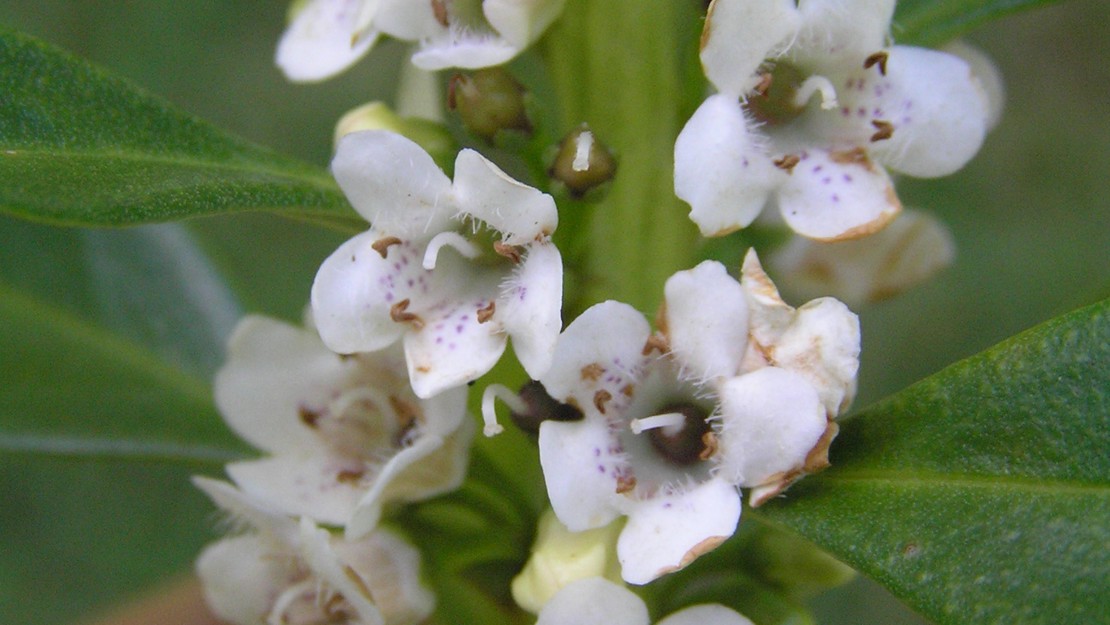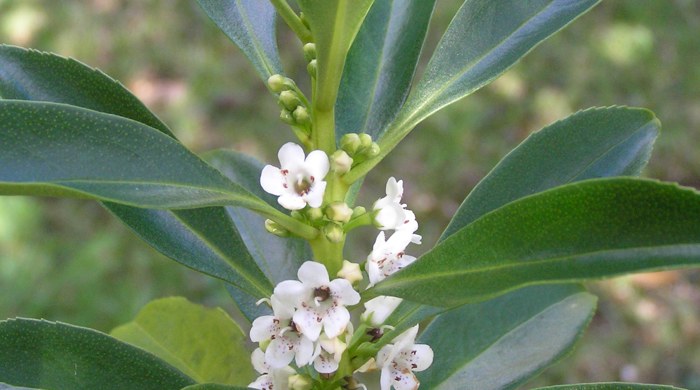Myoporum insulare including hybrids
Tasmanian ngaio
Family: Myoporaceae
Origin: Australia

Regional Pest Management Plan (RPMP) status
- Parkland with Significant Ecological Areas — Site-led (on-park only)
- Whole region — Sustained control
- Waitākere Ranges Heritage Area priority status
- National Pest Plant Accord Species
General description
Large shrub to small tree, multi-branched from base. Leaves are < 12 x 3 cm and elliptic. Flowers are white with purple dots and borne in September – June. Fruit is fleshy and purple.
What you need to know
To help protect our environment:
- You must not breed, distribute, release or sell Tasmanian ngaio. As Tasmanian ngaio is a National Pest Plant Accord species, these restrictions apply within the Auckland region and across the whole of New Zealand.
- You must not plant Tasmanian ngaio within the Auckland region, unless you are transferring an existing plant on your land to another location within the boundaries of the same property.
- You must destroy any Tasmanian ngaio on land that you occupy if it has been planted in breach of the above rules and you are directed to do so by an authorised person.
Habitats
Coastal ecosystems, cliffs, rocky sites.
Dispersal
Seeds dispersed by birds.
Impact on environment
Competes with native coastal plants. May affect genetic diversity of native ngaio (M. laetum) through hybridisation. Toxic to humans and livestock.
Control
Site Management
Follow up treated areas 3 times per year. Encourage natural regeneration of native plants or replant treated areas where possible after 2-3 treatments to establish dense ground cover and minimise reinvasion.
Recommended approaches
Physical control
Method: Dig out.
Plant parts requiring disposal: Seeds.
Disposal options: Remove to greenwaste or landfill if practical.
Biocontrol
Biocontrol is currently not available for this species.
Community agrichemical control recommendations
No qualifications: Cut stump and paste freshly cut base of stems with double strength glyphosate gel.
Basic Growsafe certified: Cut stump and spray freshly cut base with 250ml glyphosate green per 1L of water.
Certified Handler/Experienced agrichemical user: Foliar spray with 100ml glyphosate green per 10L of water and 20ml penetrant.
Caution: When using any herbicide or pesticide please read the label thoroughly to ensure that all instructions and safety requirements are followed.




